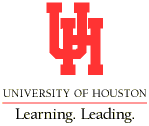 |
 |
 |
 |
 |
 |
 |
For further information, or to suggest a colloquium speaker, please
contact
the organizer.
|
 |
 |
 |
 |
 |
 |
 |
 |
To subscribe to the Colloquium mailing-lists, please
email the organizer.
|
 |
 |
 |
 |
|
 |
 |
 |
 |
Print
Announcement
William Layton
University of Pittsburgh
Ensemble Simulation Models, Algorithms and Analysis for Flow
Simulations
February 26, 2014
3:00pm PGH 646
|
Abstract
|
|
|
|
This talk will be aimed at a general audience including graduate students
in mathematics (and related areas that deal with fluids in motion). It is
based on joint work with Nan
Jiang, http://www.pitt.edu/~naj24/.
The problem of predicting fluids in motion is beset with difficulties.
Inevitable small errors in data, geometry, parameterization and
discretization grow exponentially in time with rate constant growing as the
Reynolds number increases. (As an example, a 1 cm sphere creeping at
1cm/sec through water already has Re=100 and exp(+100t) rapidly becomes
significant.) A standard method of increasing reliability of predictions,
expanding the window of predictability and evaluating resulting uncertainty
is through ensemble calculations. Unfortunately, computing flow ensembles
immediately leads to the competition between high resolution single
simulations and multiple ensemble runs. This is a boundary between what can
be done and what cannot be done. It is also an area replete with high
impact mathematics problems. This talk will describe the problem for
fluids, present some methods of addressing it including some (simple but
apparently new) ideas. For the fluids specialists, new ensemble turbulence
models will be presented, leading to a new mixing length. A few simple (but
not common in the mathematics literature) examples of how ensemble
simulations can be used to interrogate flows will be shown.
|
|
 |
 |
 |
 |
|
|

